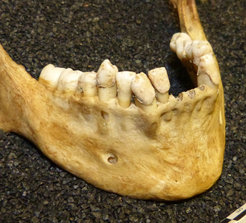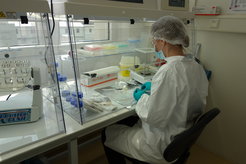Potential of Protein Analysis to Retrieve Dietary Information From Ancient Dental Calculus
A systematic study of dental calculus from the Iron Age to the present proves the potential of proteomic analysis to reveal information about individual diets, including plants, animals and dairy products consumption.

An international team of researchers, led by Jessica Hendy of the Max Planck Institute for the Science of Human History and Camilla Speller of the University of York, has shown the potential for using ancient proteins to learn about the diets of people in the past. The study, published in Proceedings of the Royal Society B, looked at archaeological samples from the Iron Age to the Post-Medieval period (8th century BC – 19th century AD) from across Britain, as well as modern samples of tooth tartar.
Archaeological tooth tartar, also known as ancient dental calculus, has been previously shown to preserve milk proteins for thousands of years. The potential for other food proteins to also be entrapped had not been tested. The researchers extracted proteins from dental calculus to determine what food remains were preserved – and what challenges must still be overcome in using this novel approach. Analyzing 100 archaeological samples, as well as 14 samples from living dental patients and recently diseased individuals, they found that potential dietary proteins could be found in about one third of the samples analyzed, with dairy-related proteins being the most commonly identified food. Other proteins found were related to plant foods, including oats, peas and vegetables in the cabbage family. In the modern samples, proteins related to potatoes, soybeans and peanuts, as well as milk proteins, were discovered.

“These findings show that the analysis of proteins extracted from ancient tooth tartar can tell us about the diets of people in the past” explains first author Hendy. “While there is still a lot we don’t know, this is exciting because it shows that archaeological dental calculus harbours dietary information, including food products that ordinarily do not survive in archaeological sites.”
The team plans to use the results of this study to help refine their protein-detection methods, and to explore particular problem areas of ancient diet research. “This approach may be particularly useful in the detection of understudied vegetative crops, especially in regions where macrobotanical remains are not preserved,” adds Camilla Speller, senior author, of the University of York.

